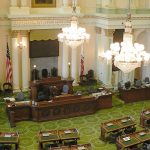From the outside, the E-4B’s blue-and-white livery resembles that of Air Force One, the presidential aircraft—also built from a Boeing 747. Inside, the two are nothing alike.
The US Air Force’s E-4B Nightwatch is better known by its unofficial name: the “Doomsday Plane.” Built from a modified Boeing 747, the E-4B exists for one singular and terrifying purpose: to keep the US government running in the unlikely event that the United States ever comes under nuclear attack.
Innocuous enough from the exterior—featuring the familiar silhouette of the 747 that a plane-watcher might expect to find at LaGuardia or JFK—the E-4B is far from a commercial airliner. Configured to serve as a flying military command post, akin to a flying Pentagon, the E-4B carries communication suites, war-planning facilities, and enough hardened technology to direct the US military at a time when US cities and civilians are burning.
The E-4B’s Specifications
- Year Introduced: 1974 (E-4A), upgraded to E-4B in 1980
- Number Built: 4 total (all upgraded to E-4B standard)
- Length: 231 ft 4 in (70.5 m)
- Height: 63 ft 5 in (19.3 m)
- Wingspan: 195 ft 8 in (59.7 m)
- Weight:
- Empty weight: ~410,000 lb (186,000 kg)
- Maximum takeoff weight (MTOW): ~833,000 lb (377,800 kg)
- Engines: Four General Electric CF6-50E2 turbofan engines (~52,500 lbf thrust each)
- Top Speed: ~602 mph (Mach 0.92; 969 km/h)
- Cruise Speed: ~567 mph (Mach 0.84; 913 km/h)
- Range: ~6,200 nmi (11,450 km); unlimited with aerial refueling
- Service Ceiling: ~42,000 ft (12,800 m)
- Loadout: EMP-hardened communications and command systems; satellite, HF, VLF, UHF, and SHF communications; long trailing-wire antenna for submarine comms; secure conference and briefing rooms, battle staff stations; presidential quarters
- Aircrew: 60-100 (flight crew, communications specialists, battle staff, security)
The E-4B’s Cold War Roots
Predictably, the E-4B was first developed during the Cold War, when nuclear annihilation was front of mind for the US government and populace alike. In those heady days, the Soviet nuclear threat loomed large, forcing war planners to actually plan for the end of times. Specifically, the E-4B was built to mitigate the effects of an attack on Washington, DC, the most likely first strike target—the destruction of which could potentially render the US impotent and rudderless. To preserve continuity of government, the Air Force developed an aircraft that could stay airborne for days, withstand electromagnetic pulse (EMP) or nuclear detonations, and connect the president with the military—everything from missile silos, nuclear submarines, strategic bombers, and dispersed troops units across the globe. Indeed, the E-4B can stay in contact with each component of America’s nuclear triad. Long trailing wire antennas allow the E-4B to contact submerged submarines; satellite uplinks connect the E-4B with faraway bases. In effect, the E-4B is a nerve center, even in the event that the military/government’s on-the-ground infrastructure is entirely vaporized.
Air Force One vs. the E-4B Nightwatch
From the outside, the E-4B’s blue-and-white livery resembles that of Air Force One, the presidential aircraft—also built from a Boeing 747. Inside, the two are nothing alike. Air Force One is built for the comfort of the president and his staff, featuring spacious offices, bedrooms, and other amenities. In an E-4B, the environment is spartan, resembling something like a submarine. Luxury is an afterthought. Pure function dictates the layout. Rows of consoles, banks of phones, secure video feeds, and cryptographic gear dominate the floor plan. A conference room offers senior officials a space to huddle and make decisions—theoretically the type that would lead to death and destruction on a global scale, if the plane is in use as intended. Another space is set aside to serve as the president’s sleeping quarters.
The E-4B’s protective features are equally important to the aircraft’s Doomsday purpose. Hardened against EMP attacks, the E-4B is built to maintain functionality through a nuclear attack that would fry more conventional circuitry. And the plane can refuel in mid-air—something a typical 747 cannot—allowing it to stay aloft indefinitely, as long as it has pilots to fly it. The E-4B also features shielding against radiation and an advanced navigation system that allows for continuing navigation even if GPS satellites have been destroyed.
Only four E-4Bs exist. Crucially, one is always on duty, requiring a crew of nearly 100 airmen to rotate through long shifts, to allow for the aircraft to always be standing by. The operational tempo of the aircraft can be draining; one E-4B even shadows the president during major events like State of the Union addresses, foreign trips, and summits—always offering a hedge against potential catastrophe.
About the Author: Harrison Kass
Harrison Kass is a senior defense and national security writer at The National Interest. Kass is an attorney and former political candidate who joined the US Air Force as a pilot trainee before being medically discharged. He focuses on military strategy, aerospace, and global security affairs. He holds a JD from the University of Oregon and a master’s in Global Journalism and International Relations from NYU.
Image: Wikimedia Commons.
















